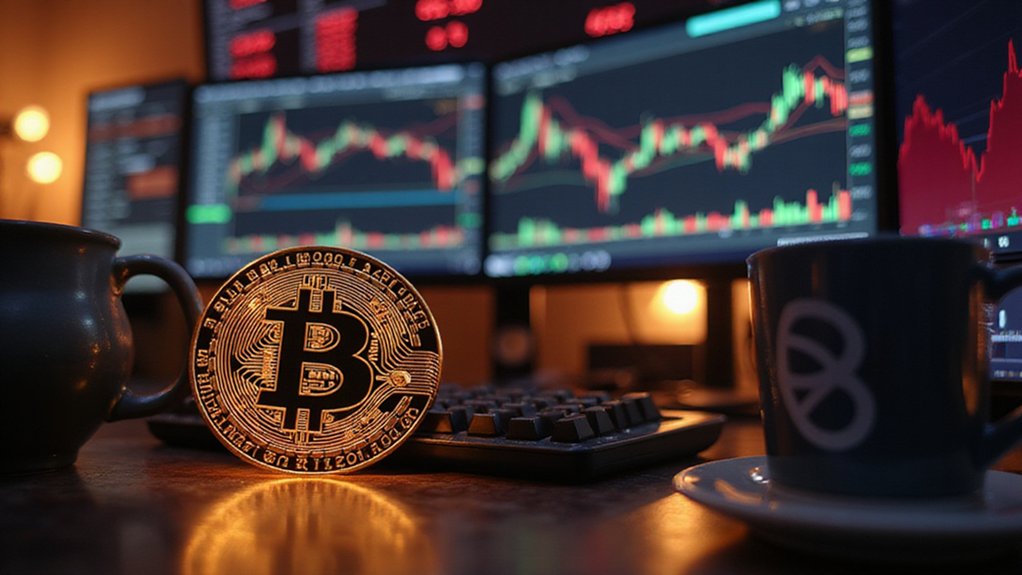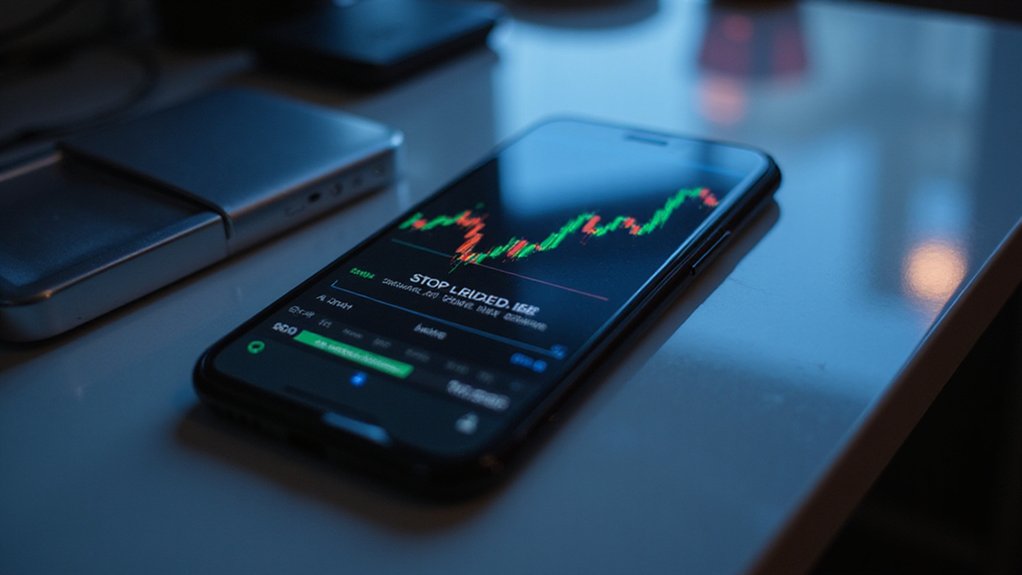Altcoin season typically emerges when Bitcoin’s dominance falls below 50% and alternative cryptocurrencies outperform BTC over 90-day periods. This cyclical phenomenon materializes after Bitcoin rallies plateau, redirecting capital toward smaller-cap tokens with volatile profiles. Key indicators include declining Bitcoin market dominance, rising Altcoin Season Index readings, and proliferating social media chatter about obscure tokens. Savvy traders recognize these patterns, positioning themselves for asymmetric returns—while understanding the inevitable correction lurking beyond the euphoria.

Precisely when Bitcoin’s gravitational pull on crypto capital begins to wane, altcoin season emerges from the digital shadows. This cyclical phenomenon—characterized by capital migration from crypto’s flagship asset into its more volatile cousins—manifests when Bitcoin’s price momentum plateaus after significant rallies. Investors, perpetually in pursuit of asymmetric returns, redirect their liquidity toward smaller-capitalization tokens that promise (though certainly don’t guarantee) more dramatic percentage gains.
The telltale indicators of this market rotation become increasingly apparent through several quantifiable metrics. Bitcoin dominance—that percentage of total crypto market capitalization attributed to BTC—typically experiences a marked decline as altseason approaches. The Altcoin Season Index simultaneously rises, confirming what traders already sense: the market’s attention has shifted decidedly toward the alternative asset class. Social media chatter provides another barometer, with mentions of obscure tokens suddenly proliferating across platforms where crypto enthusiasts congregate.
As Bitcoin dominance wanes and the Altcoin Season Index rises, obscure tokens dominate social conversations—the unmistakable signature of market rotation.
These altcoin seasons vary tremendously in duration and intensity, lasting anywhere from fleeting weeks to sustained months. Historical precedent suggests the most dramatic iterations follow Bitcoin bull cycles, as evidenced by the extended altseason of 2017, which catapulted numerous tokens to stratospheric valuations. During this period, Bitcoin dominance fell dramatically from 86.3% to 38.69% as altcoins surged. Recent iterations, while briefer, continue to offer substantial trading opportunities for those properly positioned. Technological advancements in blockchain projects often coincide with and fuel these market cycles as investors speculate on promising new innovations.
External catalysts frequently accelerate altseason’s arrival. Regulatory developments—particularly approvals for altcoin-focused ETFs—can trigger capital inflows, while broader economic shifts may influence investor risk appetites. The confluence of these factors creates a perfect environment for the FOMO-driven trading frenzy that typifies these periods.
For traders traversing these volatile waters, altseason represents both opportunity and hazard. The heightened liquidity and trading volumes benefit market participants, while the exaggerated price movements create ideal conditions for speculative positioning. Those who recognize altseason’s approach can strategically rebalance portfolios, potentially capturing outsized returns—provided they maintain sufficient discipline to exit before the inevitable correction arrives.
Frequently Asked Questions
How Do I Identify Potential Altcoins Before Altcoin Season Begins?
Identifying promising altcoins before the broader market catches on requires a multi-faceted approach.
Savvy investors monitor declining Bitcoin dominance, increased network activity, and rising transaction volumes as preliminary indicators.
Technical metrics—RSI values signaling oversold conditions, breakthrough of key resistance levels—combined with fundamental analysis of development activity and tokenomics provide a thorough evaluation framework.
Projects exhibiting strong ecosystem partnerships, upcoming protocol upgrades, or institutional interest often outperform during the inevitable rotation of capital from Bitcoin to alternative cryptocurrencies.
Should I Sell All My Bitcoin During Altcoin Season?
Selling all Bitcoin during altcoin season represents a high-risk maneuver that few seasoned investors would recommend.
While altcoins typically outperform during these cycles, complete Bitcoin divestment ignores its foundational role in the crypto ecosystem.
A more prudent approach involves strategic reallocation—perhaps shifting 20-40% of Bitcoin holdings to promising altcoins while maintaining core exposure.
This balanced strategy acknowledges the ephemeral nature of altcoin seasons while preserving positioning in the market’s anchor asset.
Do Exchange-Specific Tokens Perform Differently During Altcoin Season?
Exchange-specific tokens indeed chart their own course during altcoin seasons, typically benefiting from increased trading volumes and fee generation on their native platforms.
Their performance often correlates with exchange popularity and tokenomics design; those with burn mechanisms or staking rewards may amplify gains as platform activity surges.
Unlike purely speculative altcoins, these tokens maintain utility fundamentals regardless of market cycles, though they remain susceptible to regulatory headwinds that can dramatically alter their trajectory mid-rally.
What Technical Indicators Signal the End of Altcoin Season?
Technical indicators signaling altcoin season’s conclusion include rising Bitcoin dominance percentage, bearish RSI divergences on altcoin charts, and MACD crossovers below zero.
Volume metrics provide vital insight—diminishing altcoin trading activity relative to Bitcoin suggests waning enthusiasm.
The failure of altcoins to maintain outperformance over 90-day periods, coupled with their inability to reclaim key resistance levels, often heralds the party’s end.
Macro factors like interest rate decisions can accelerate these technical signals, prompting capital rotation back to Bitcoin.
How Does Institutional Investment Affect Altcoin Season Cycles?
Institutional investment fundamentally reshapes altcoin seasons by concentrating capital in established assets like Bitcoin and Ethereum.
This new paradigm creates sector-specific mini-seasons rather than broad rallies, with compressed performance windows and enhanced scrutiny for regulatory compliance.
The traditional pattern—where retail investors rotate en masse into smaller projects—faces structural impediments as institutions prioritize liquidity and risk management, effectively elongating cycles and diminishing the magnitude of speculative altcoin runs many crypto natives once considered inevitable.









